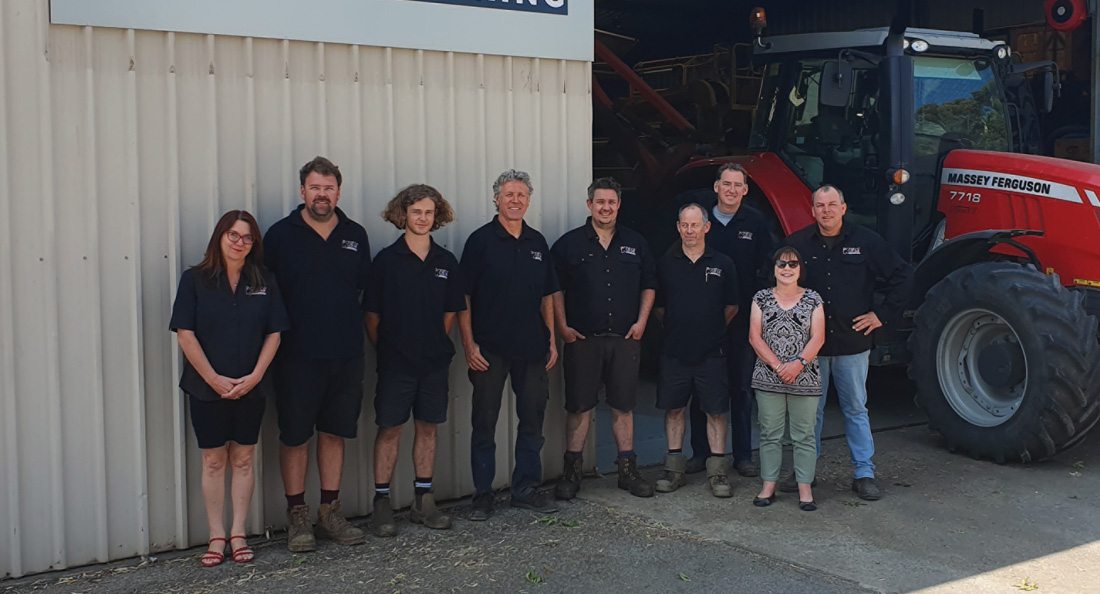In mining, quarrying and extractive industries, ball mills are the most common grinding machine and certainly an interesting piece of engineering ingenuity, according to Eddie Lawrence.
“A ball mill is a long, armoured, rotating cylinder— typically mounted on two large sized bearings—raw materials are fed into the ball mill, and it uses centrifugal force to grind ore down to size before it gets parsed.”
“There are metal balls and armour plates inside the ball mill cylinder,” he explains further. “An electric drive through a helical gearbox will rotate the cylinder and the centrifugal force pushes them against the wall until they tumble from gravity and reduce the size of the material.”
Eddie brings a rich understanding of heavy industry and engineering to his role as Webster BSC Sales Manager for Tasmania. Tasmania is home to several mid-scale zinc, tin, magnetite, and gold mining operations and the on-site processing plants where the raw materials are processed at.
He discusses a recent solution developed for underground polymetallic based mine MMG located in Rosebery, Tasmania. The mine produces around 55,000 – 65,000 tonnes of zinc in zinc concentrate annually; as well as lead and copper concentrate; and gold and silver doré.
MMG Reliability Engineer Brett Cumming was looking to upgrade the drive coupling on their ball mill machine from some legacy equipment to a modern standard that would be easy to maintain.
“The secondary ball mills grind the polymetallic ore down to the required size to enable liberation of the copper, lead, zinc and gold particles,” explains Brett.
“The coupling fitted to the ball mill pinion drive was outdated and sourcing spare parts was proving difficult. I reached out to Eddie and his team at Webster BSC regarding a suggested replacement, we wanted something easy to maintain, fit for purpose and reliable,” he continues.
Eddie headed out to the MMG site to take stock of the specs on the ball mill and determine what the best coupling solution would be.
“The body of the machine rotates at around 180 rpm from an 8-pole electric motor creating the speed down ratio through a gearbox,” says Eddie. “So, the coupling solution needed a high torque rating to account for the torque required to rotate the Grinding mill application.”
“We opted for a Timken Quick-Flex® Complete Standard Coupling with High-Speed Split Cover for maximum torque rating, and ease of fitment” he further adds. “A ‘fit-and-forget’ solution that would be easy to install and source parts for when the time comes for maintenance.”
A key feature of the Quick-Flex® elastomeric couplings is the High-Speed Cover designed to withstand harsh conditions. Furthermore, the lifespan of the Quick-Flex® couplings has been known to match that of the equipment, reducing cost of ownership and boosting uptime on applications.
According to Brett and his team at MMG, the new ball mill drive design was successful after a seamless install during a scheduled maintenance period performed by technicians on site.
“The replacement coupling has been in continuous operation now for 10 months, it’s performing very well and we’re now looking at other pieces of equipment where we’re going to complete the same conversion,” remarks Brett.
“The team at Webster BSC were quick to go out to site and find a solution that works for the customer,” Eddie concludes. “The MMG success story came about because of the diligence of our team and the excellent relationship we have with Australian Timken which gives us access to continuously replenished stock supply – so it’s a win-win, really.”
Timken Quick-Flex® Couplings
Applications:
• Motor to gearbox (low torque/high speed)
• Gearbox to driven equipment (high torque/low speed)
• Motors to pumps
• Any drive shaft to a driven shaft
Features and Benefits:
• Twelve families ranging in bore sizes
• Designed for continuous and peak torque levels
• Couplings accept shaft misalignment, up to 2 degrees.
• Split cover options help resist axial separating force under high torque.
• Standard and double-ended spacer couplings available for increased application acceptance.
• Four bore options available to meet customers’ needs: Bored, Bushing, Splined and Mill Motor style.
• Four insert choices for varying torque needs and temperature ranges up to 350° F




